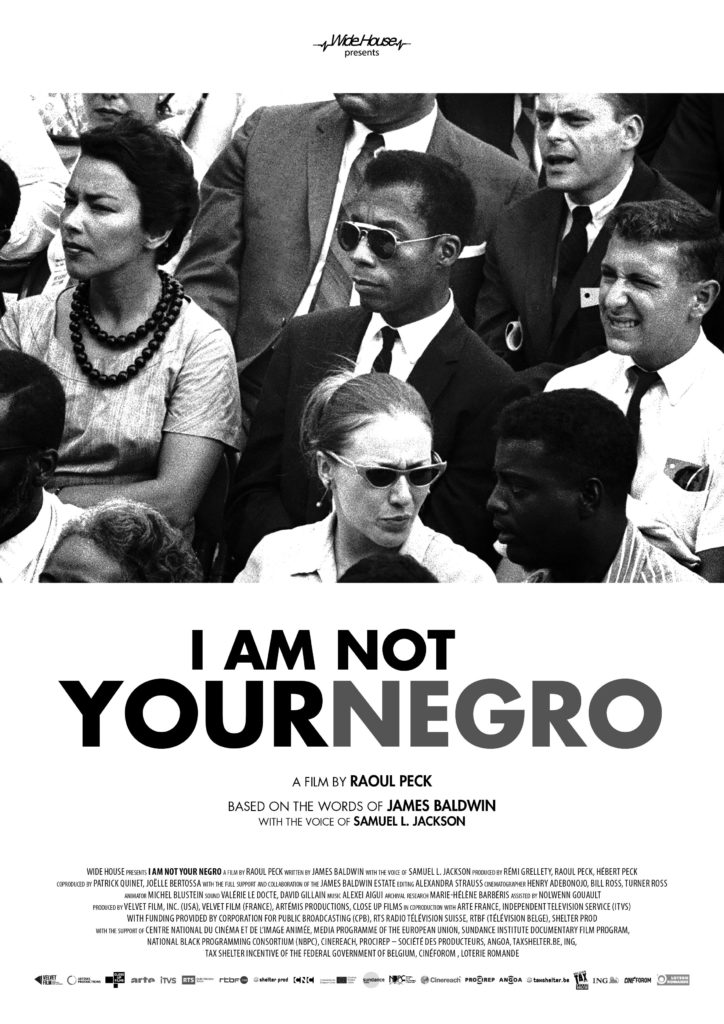As the film opens, the voice of Samuel L. Jackson is rich and deep—almost booming. His capacity for intensity arguably made him perfect choice to narrate this documentary. Typewriter clicks accompanied words on the screen, words from a letter written by James Baldwin to his literary agent.
In the correspondence, he described the book he was writing, which would be titled “Remember This House”. After his death in 1987, Baldwin’s book remained unfinished. Director of “I Am Not Your Negro”, Raoul Peck, reimagined Baldwin’s work, integrating the manuscript with photographs and videos of not only Baldwin, but his friends Martin Luther King Jr., Malcolm X, Medgar Evers and others.
The film does not follow a chronological structure, nor does it develop a “linear” thesis. Instead, it is is organized into many separate chapters, with titles such as “Hero” and “Witness.” Baldwin’s manuscript opens each chapter and is quickly woven in and out of cinematic breaks.
The film acknowledges that Baldwin’s words are irresistibly applicable to the modern racial climate, seizing the opportunity to diverge from Civil Rights Era footage. The faces of Tamir Rice, Trayvon Martin and others flashed on the screen toward the end of the movie.
“I Am Not Your Negro” contains some lump-in-your-throat scenes that are deeply graphic. Many of these images are of police beatings, lynchings and shootings. In addition to including real-life film footage, the documentary inserts scenes from movies and television shows, many of which are equally shocking.
By including a small portfolio of American film, an underlying theme of the movie reveals itself—criticism of the media. Much of the documentary is strung together by this continued analysis of the portrayal of race in the media, especially lingering on Sidney Poitier’s career.
Because the movie is a combination of Baldwin’s words and Peck’s visual storytelling, it can become difficult to separate Baldwin’s message from Peck’s. It is most certainly an interpretive version of the manuscript, with many themes carefully inserted or emphasized in the creation of the documentary. What Peck does exceptionally well, however, is avoid timeworn visuals. The most popular film footage and photographs used in the creation of Civil Rights Era documentaries seem to be almost entirely absent from the film.
Toward the end of the movie, several clips are shown from James Baldwin’s appearance on the Dick Cavett Show.
“I don’t know what most white people in this country feel. I can only conclude what they feel from the state of their institutions,” Baldwin said during the interview, providing examples of black exclusion from white institutions. “I don’t know whether the labor unions and their bosses really hate me; that doesn’t matter, but I know I’m not in their unions.”
The juxtaposition of 1960s Birmingham with recent images of Ferguson is an emotional element. The struggle for liberation defined by Baldwin’s words can be substantiated with footage of today’s world, a world that could be seen as a modern echo of history’s past. The film includes a montage of apologetic sentiment from symbols of white power, playing the words “I’m sorry” iterated from various white political leaders including most recent presidential candidates Hillary Clinton and Donald Trump.
In one particular speech in the film, James Baldwin recounts a time when Robert Kennedy had told him that it was “conceivable in forty years in America we might have a negro president.”
Baldwin responds to this sentiment by saying, “We’ve been here for four- hundred years and now he tells us that maybe in forty years, if you’re good, we may let you become president.” This scene is followed by clips of Michelle and Barack Obama, the very first black couple to reside in the White House, some decades after this speech.
The chilling connections between past and present follow the lead of other recent documentary releases like “13th,” adding this film to the list of must-sees for continued dialogue of social change.
The film closes with a clip of Baldwin, demanding reflection on the racial slur used by white folks against black folks, referring to that word as an entity.
“You invented him,” said Baldwin, “you the white people invented him, and you’ve gotta find out why.”
Author may be reached at
[email protected]








![Civil War is A24’s Political Blockbuster that Exceeds Expectations [REVIEW]](https://seattlespectator.com/wp-content/uploads/2024/04/CivilWarReviewWeb-1-1200x791.jpg)



![Jordan Ward [REVIEW]](https://seattlespectator.com/wp-content/uploads/2024/04/ward_1-1200x800.jpg)